KENNEDY SPACE CENTER, FL – This week’s appearance of the Moon over the Kennedy Space Center marks the perfect backdrop heralding the start of NASA’s determined push to send Humans to Mars by the 2030s via the agency’s new Orion crew capsule set to soar to space on its maiden test flight in less than two days.
Orion is the first human rated vehicle that can carry astronauts beyond low Earth orbit on voyages to deep space in more than 40 years.
Top managers from NASA, United Launch Alliance (ULA), and Lockheed Martin met on Tuesday, Dec. 2, and gave the “GO” to proceed toward launch after a thorough review of all systems related to the Orion capsule, rocket, and ground operation systems at the launch pad at the Launch Readiness Review (LRR), said Mark Geyer at a NASA media briefing on Dec. 2.
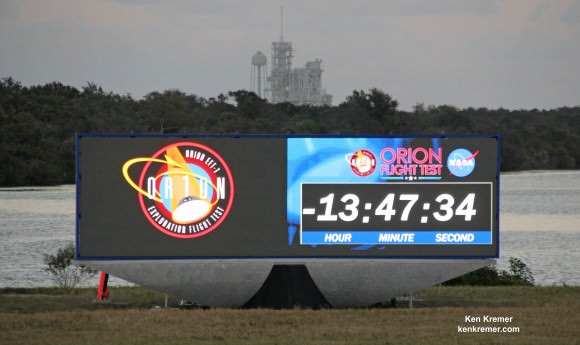
Orion is slated to lift off on a United Launch Alliance Delta IV Heavy rocket on its inaugural test flight to space on the uncrewed Exploration Flight Test-1 (EFT-1) mission at 7:05 a.m. EST on December 4, 2014, from Space Launch Complex 37 (SLC-37) at Cape Canaveral Air Force Station in Florida.
America’s astronauts flying aboard Orion will venture farther into deep space than ever before – beyond the Moon to Asteroids, Mars, and other destinations in our Solar System starting around 2020 or 2021 on Orion’s first crewed flight atop NASA’s new monster rocket – the SLS – concurrently under development.
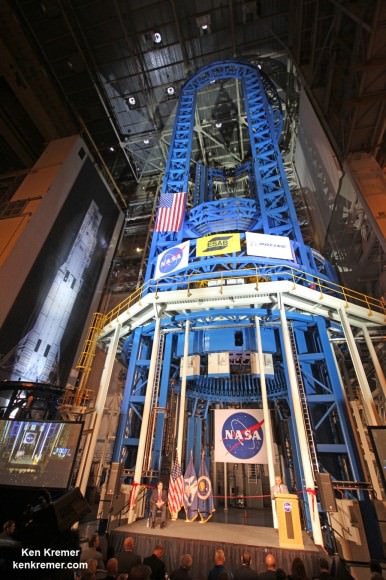
The current weather forecast states the launch is 60 percent “GO” for favorable weather condition at the scheduled liftoff time of at 7:05 a.m. on Dec. 4, 2014.
The launch window extends for 2 hours and 39 minutes.
The two-orbit, four and a half hour Orion EFT-1 flight around Earth will lift the Orion spacecraft and its attached second stage to an orbital altitude of 3,600 miles, about 15 times higher than the International Space Station (ISS) – and farther than any human spacecraft has journeyed in 40 years.
EFT-1 will test the rocket, second stage, and jettison mechanisms, as well as avionics, attitude control, computers, and electronic systems inside the Orion spacecraft.
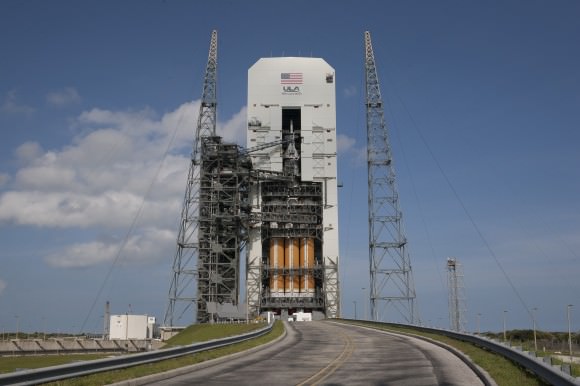
Then the spacecraft will carry out a high speed re-entry through the atmosphere at speeds approaching 20,000 mph and scorching temperatures near 4,000 degrees Fahrenheit to test the heat shield, before splashing down for a parachute assisted landing in the Pacific Ocean.
NASA TV will provide several hours of live Orion EFT-1 launch coverage with the new countdown clock – starting at 4:30 a.m. on Dec. 4.
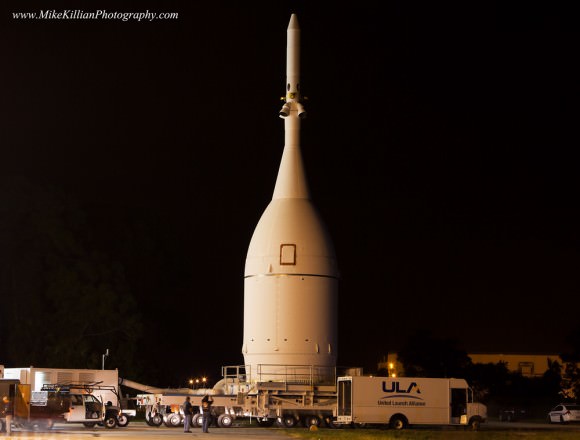
Watch for Ken’s ongoing Orion coverage and he’ll be onsite at KSC in the days leading up to the historic launch on Dec. 4.
Stay tuned here for Ken’s continuing Orion and Earth and planetary science and human spaceflight news.
Ken Kremer
………….
Learn more about Orion, SpaceX, Antares, NASA missions, and more at Ken’s upcoming outreach events:
Dec 1-5: “Orion EFT-1, SpaceX CRS-5, Antares Orb-3 launch, Curiosity Explores Mars,” Kennedy Space Center Quality Inn, Titusville, FL, evenings
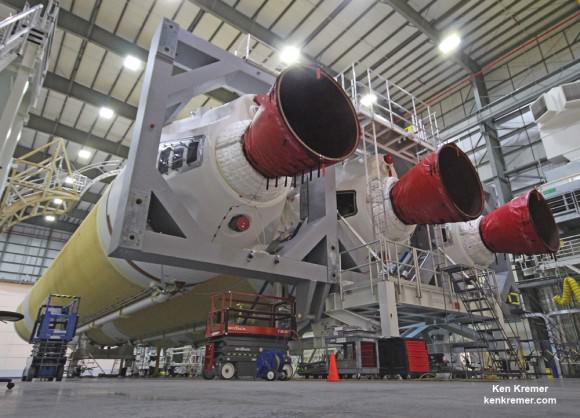

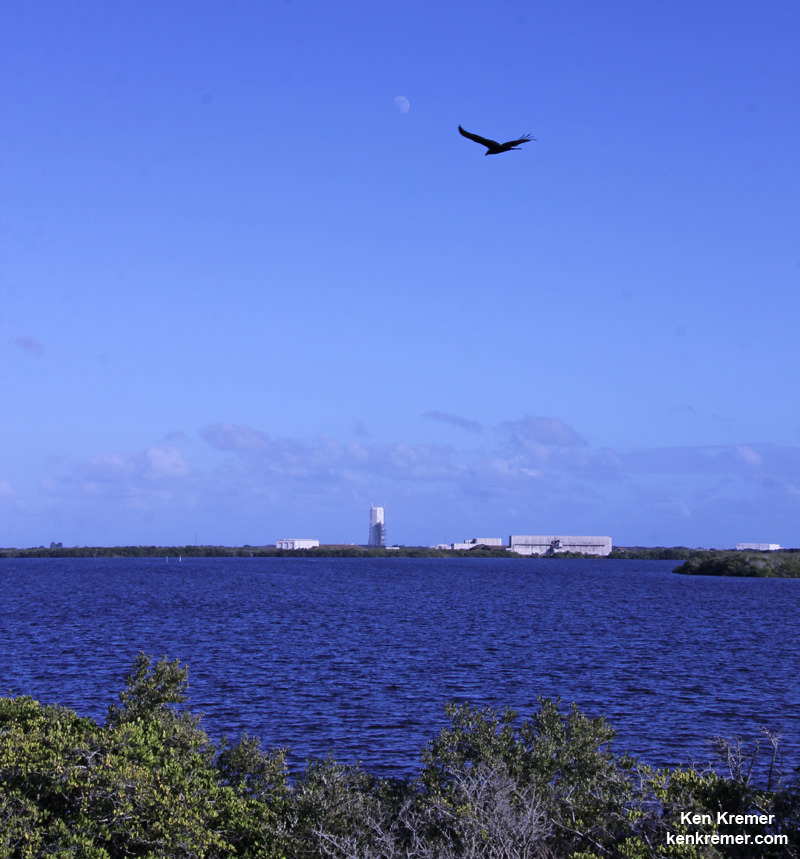
I can hardly wait until manned Orion voyages become ongoing.
To what destination? It can only land in Earth’s oceans.
Orion is a piece of the puzzle, but there are no plans to actually land human beings on the Moon or on Mars or on any asteroid. This hype and hope with the patriotic eagle in the sky and everything, will soon make the space enthusiast community very disappointed. Again! Both SLS and Orion may be technologically outdated in the 2030’s when, at the earliest, they can be used for crewed landings on celestial bodies.
But if they started with the manned mission, you could equally say there’s no vehicle to take them as far as Earth orbit. You’ve got to start somewhere.